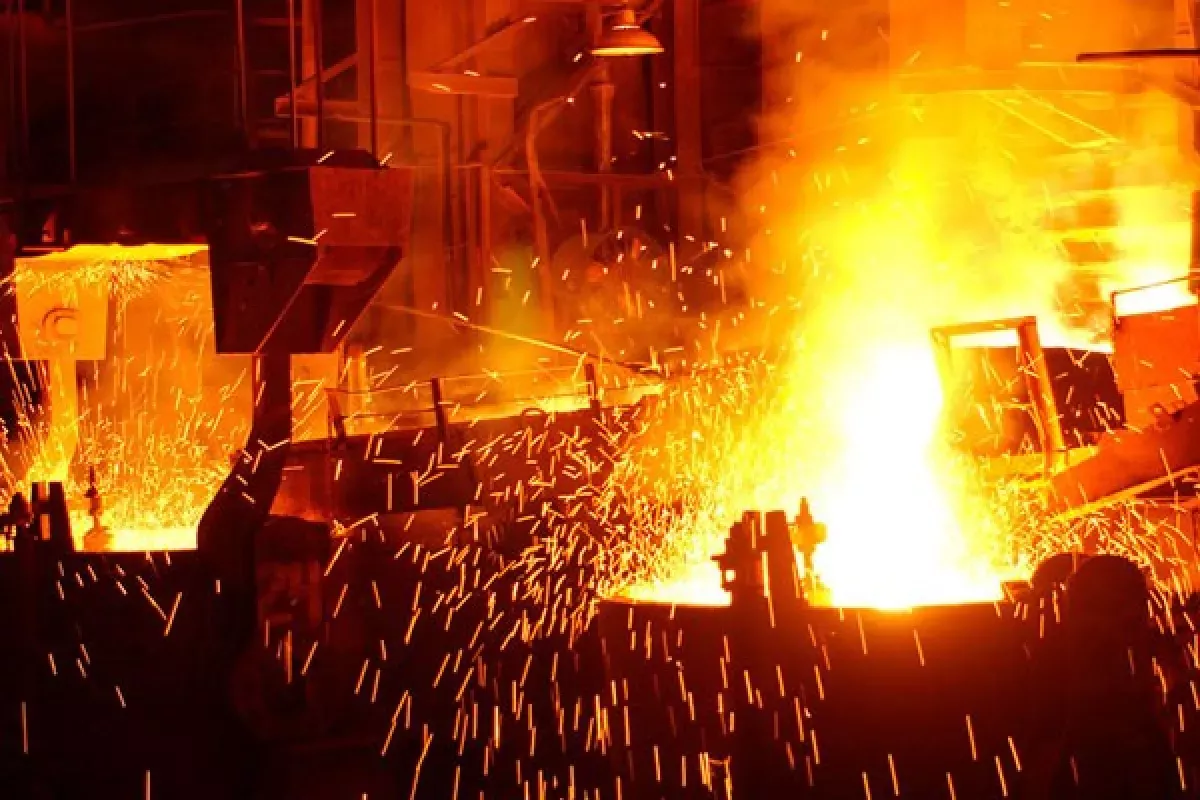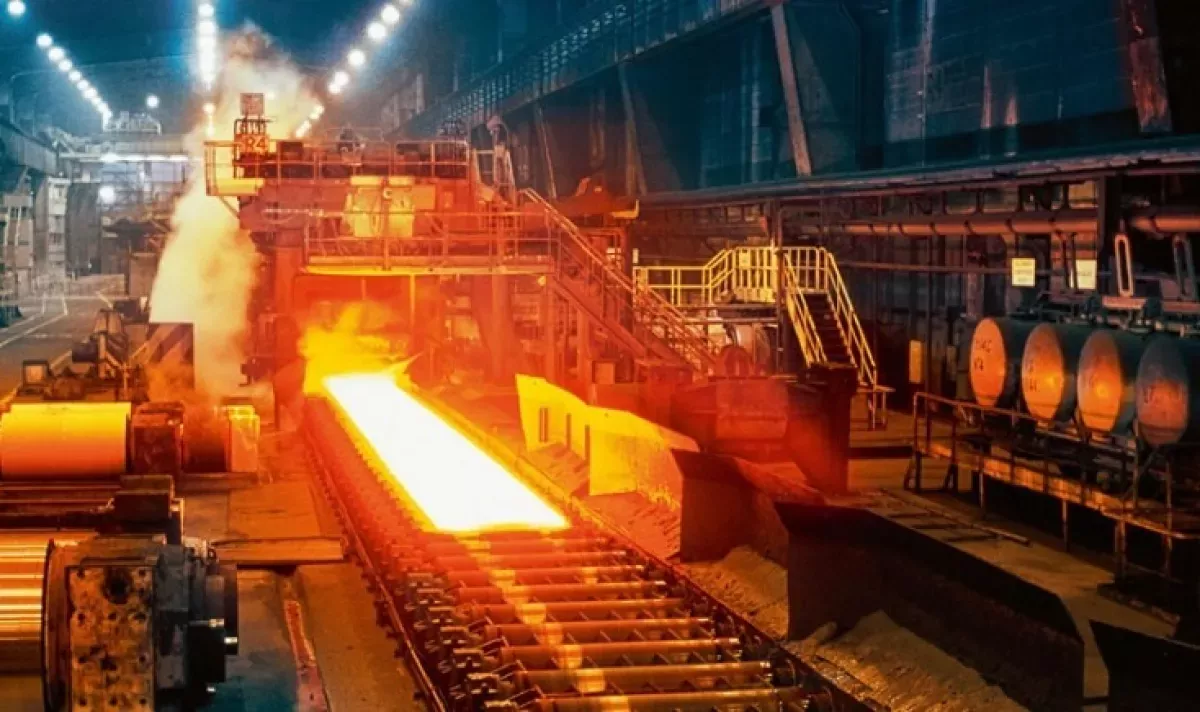Azerbaijan's black metallurgy: Shifting into steel independency What the Dashkasan deposit promises?
The absence of a complete production cycle in black metallurgy in Azerbaijan throughout its period of state independence has created several problems due to dependence on steel imports and the necessity to use scrap metal as raw material. As part of a new industrialization strategy, for several years now, the subsidiary of AzerGold, Dashkasan Iron Ore (DDF) LLC, has been implementing a large-scale project at the region’s largest iron ore deposit Dashkasan.
In 2025-2026, it is planned to establish ore enrichment and produce high-quality concentrate, followed by steel production. Recently, the prestigious British publication Mining Journal published an extensive article on the prospects for the development of black metallurgy in Azerbaijan.
Despite the presence of the largest iron ore deposits in the South Caucasus, the metallurgical complex of Azerbaijan in the Soviet years mainly processed finished pig iron and steel raw materials coming from metallurgical plants in Russia, Ukraine, Kazakhstan and even Georgia. In turn, iron ore mined in Dashkasan, as well as local fluxes and bentonites were sent to the Rustavi metallurgical plant for smelting. This complex scheme somehow functioned within the framework of the Soviet system of offsets and subsidies for energy and transport services. However, under market conditions, already in the 90s, due to the technological backwardness of plants and mines, the domestic metallurgical industry turned out to be unprofitable and, in fact, ceased to operate.
Since then, the existing enterprises in Azerbaijan that process black metals—such as producers of pipes and metal structures, as well as machine-building plants manufacturing oil and gas equipment, vehicles, and defence products—have fully shifted to using imported steel. The only plant, Baku Steel Company (BSC), which began producing steel rolled products in May 2001, uses scrap metal rather than ore or concentrate as raw material. Specifically, BSC produces rebar, angles, and other products for the construction industry from scrap metal. Subsequently, BSC expanded its capabilities by renovating and launching the Sumgayit Pipe Rolling Plant, Azerboru, in 2017, and also commissioned the Baku Non-Ferrous and Foundry Company in the Sumgayit Chemical Industrial Park (SCIP).

Nevertheless, Azerbaijan's metallurgical complex has been unable to overcome its fundamental industry problems, particularly the lack of a complete production cycle from ore to finished products. This has resulted in a heavy dependence on steel imports, compounded by the depletion of a significant portion of the country’s scrap metal resources, which has led to rising production costs. Unfortunately, all previous attempts to privatize the Dashkesan Filizsaflashdirma Mining and Processing Plant and attract investors to establish a complete metallurgical cycle based on this facility have not been successful.
A turning point in this sector occurred in 2020, following an order from Azerbaijan's President Ilham Aliyev, which mandated that the state-owned AzerGold undertake all activities related to the operation of the Dashkasan Iron Ore deposit. As a result, the subsidiary Dashkasan Iron Ore LLC was established to prepare for operational activities. In the initial phase, assessments were conducted to evaluate the ore resources at two deposits within the Dashkasan complex: "Northwest" and "Southeast." The exploration results revealed an additional 69.7 million tons of resources, bringing the total ore reserves to 309.16 million tons.
According to a 21-year operational plan for these deposits, extraction and development work commenced at the "Southeast" deposit in June 2022. By the beginning of 2024, 6.5 million tons of material had been excavated, and 1.8 million tons of ore reserves had been accumulated. The specialists at the LLC continue their research, conducting geochemical analyses of samples obtained from drilling operations. An international consulting firm will soon be engaged to reassess the volumes of mineral resources and develop a new operational plan for the mines.
It is worth noting that the relatively low iron content (averaging 40%) in the ore of the Dashkasan deposit requires these ores to be enriched to a minimum of 67%. Therefore, the construction of a beneficiation plant for concentrate production is planned. Given the high investment cost of the project (estimated by Boston Consulting Group at around 1.7 billion manats ($1 billion)), AzerGold is currently negotiating with several large potential partner companies to secure funding without placing an additional burden on the state budget. The ultimate goal of attracting foreign investment and developing the Dashkasan iron ore deposit is to establish a complete production chain from ore to finished products.

Recent extensive coverage in the prestigious British publication Mining Journal highlights the significant prospects for Azerbaijan's black metallurgy resulting from the development of the ore potential of the Dashkasan deposit. The article discusses the revival of operations at the largest iron ore deposit in the South Caucasus and the efforts to create a production chain that includes the production of iron concentrate and its processing into semi-finished products for steelmaking, utilizing advanced international practices and modern technological solutions.
Specifically, the article points out that the next step after constructing the beneficiation plant for iron concentrate production will be to build a plant for producing intermediate iron-containing products—pellets that meet the technical and chemical specifications suitable for final product manufacturing. These pellets will be directed to the HBI plant for producing Hot Briquetted Iron (HBI) with an iron content of 95%. All these developments will help meet the growing demand for high-quality raw materials for steel production directly in Azerbaijan, and importantly, will facilitate exports, providing the republic with foreign currency resources.
The article also notes that to ensure compliance with modern environmental standards, global trends aimed at reducing harmful emissions into the atmosphere were considered from the design stage of the new plants. Specifically, the HBI technology allows for a reduction in carbon dioxide emissions by up to 60% compared to traditional methods, with the prospect of transitioning production processes to environmentally friendly hydrogen, thereby applying the most advanced "green" technologies.
Mining Journal particularly emphasizes the significant interest from potential foreign investors in the project being implemented by Dashkasan Iron Ore LLC. At the same time, the article states that the commissioning of the iron ore plant and facilities at the Dashkasan deposit will positively impact the employment index in the Ganja-Dashkasan economic region, where thousands of permanent jobs will be created.
It is worth recalling that at the beginning of this year, General Director of Dashkasan Iron Ore LLC, Jeyhun Aliyev, estimated the contribution of developing iron ore deposits to Azerbaijan's GDP to be around 7.5 billion manats ($4.4 billion) by 2047.








